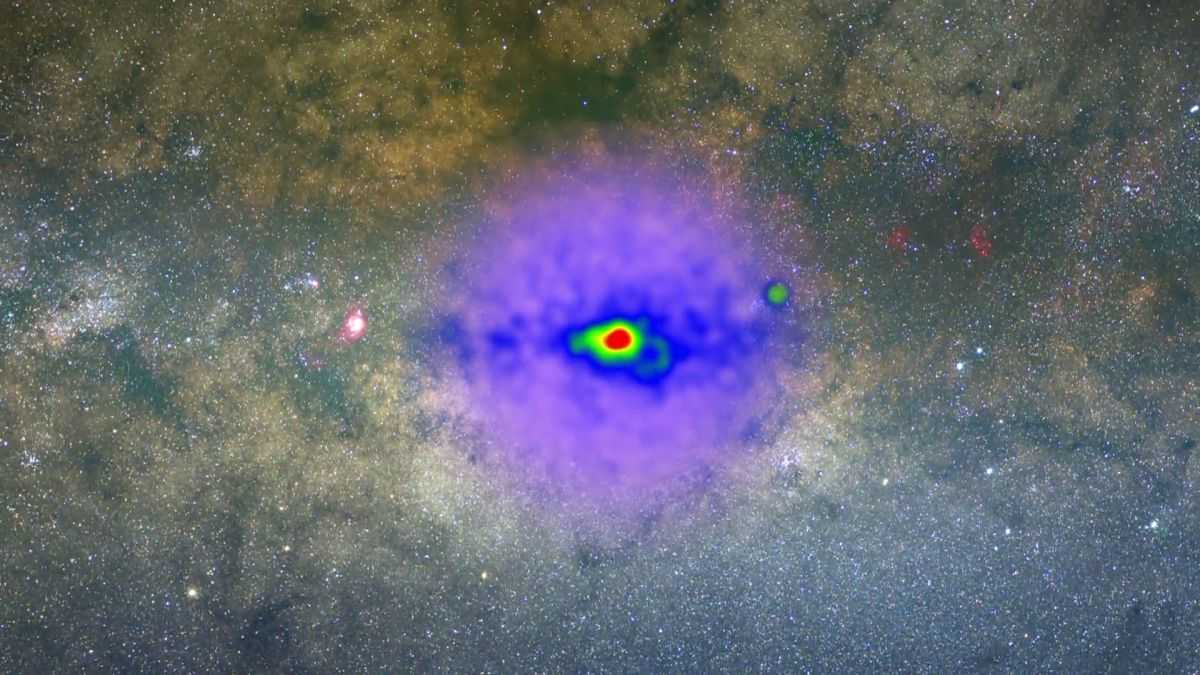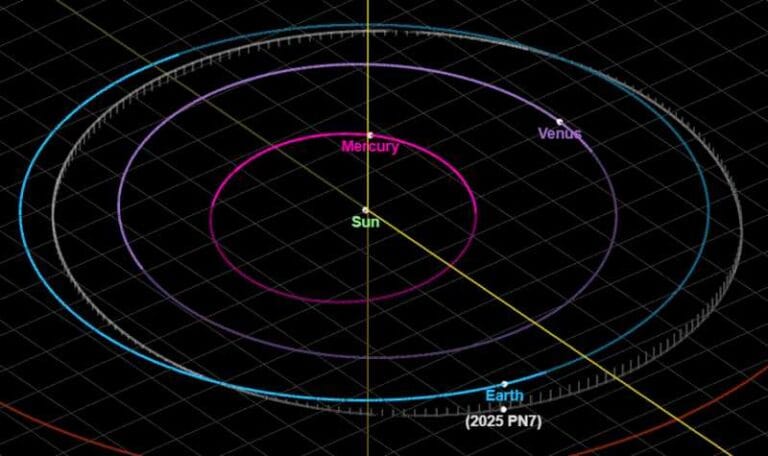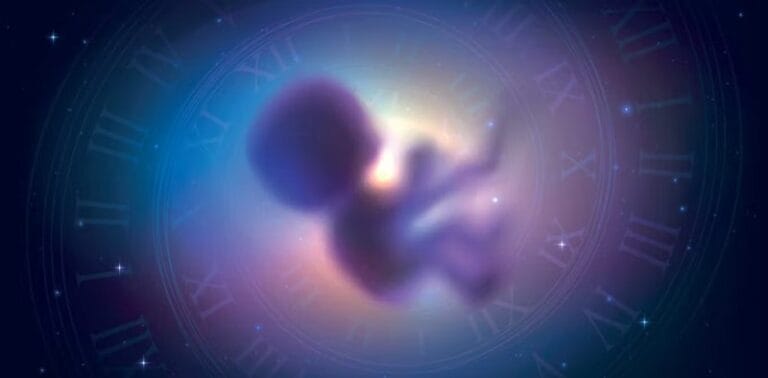Brightness detected in space could be a sign of dark matter self-destructing

A strange gamma-ray glow in the heart of the Milky Way could represent the long-sought “fingerprint” of dark matter particles annihilating, a new study suggests. Researchers who simulated Milky Way–like galaxies found that the mysterious extra gamma radiation coming from the galactic center could be explained either by dark matter annihilation or by millisecond pulsars—and the dark matter hypothesis might even have a slight edge.
“Dark matter dominates the Universe and holds galaxies together. It is extremely important, and we are constantly thinking of ideas about how we might detect it,” says astrophysicist Joseph Silk of Johns Hopkins University. “Gamma rays, and specifically the excess light we are observing at the center of our galaxy, could be our first clue.”
The phenomenon, known as the Galactic Center GeV Excess (GCE), has intrigued astronomers since its discovery in 2009 in data from NASA’s Fermi Gamma-ray Space Telescope. Something in the galactic center is producing a glow in the form of extremely energetic light, but its origin remains unknown.
There are two main candidates to explain the GCE. The first is dark matter, the mysterious source of gravity present throughout the Universe, which cannot be detected directly. Among the hypothetical candidates are WIMPs (weakly interacting massive particles). Scientists predict that when a WIMP and its antiparticle collide, they annihilate each other, releasing various particles, including gamma-ray photons.
The other candidate is millisecond pulsars—extremely fast-spinning neutron stars formed from the collapsed cores of massive stars that exploded as supernovas. These rapidly rotating stars emit beams of radio waves, particles, and radiation, including X-rays and gamma rays, creating a pulsing effect. Although astronomers have not yet detected the population of pulsars needed to explain the GCE, there are ways to narrow down the possibilities.
The distribution of old stars in the galactic bulge—the central, bubble-shaped region of the Milky Way—appears to form an “X” pattern, while the galaxy’s dark matter halo would be roughly spherical. This difference in shapes would affect the appearance of the GCE: if pulsars were responsible, the glow would have a more “boxy” shape, whereas dark matter would produce a more spherical form. Fermi data suggest that the GCE exhibits a distinctly boxy shape.
To investigate whether this shape rules out dark matter, researchers led by cosmologist Moorits Mihkel Muru of the Leibniz Institute for Astrophysics Potsdam in Germany ran detailed simulations of the Milky Way’s evolutionary history. They mapped the density and distribution of dark matter and compared it with the distribution of old stars, used as a proxy for millisecond pulsars.
Instead of modeling how annihilation changes over time, the team analyzed the current structure of dark matter and its projected gamma-ray signal, observing everything from a distance of 8 kiloparsecs—equivalent to the distance from the Solar System to the galactic center. The results indicate that the dark matter halo is likely not perfectly spherical but slightly flattened due to the Milky Way’s history of mergers with other galaxies. This shape produces a boxy gamma-ray glow, suggesting that the GCE’s square-like appearance does not rule out dark matter as its origin.
“Both hypotheses for the GCE—the annihilation of dark matter and millisecond pulsars—are equally plausible when considering morphology, spectrum, and intensity, with perhaps a slight edge for dark matter in the latter aspect due to the low observed number of millisecond pulsars,” the researchers write in Physical Review Letters.
Some observations also indicate small granular variations in the GCE, as if there were point sources, such as millisecond pulsars. Dark matter annihilation, on the other hand, would produce a more uniform glow. This new study does not directly address this small-scale texture, which has been explored in other analyses, but reinforces that the large-scale shape does not rule out dark matter, allowing for the possibility that both sources could be contributing.
Future observatories, such as the Cherenkov Telescope Array and the Southern Wide-field Gamma-ray Observatory, are expected to help distinguish between the two scenarios. “Perhaps we will see new data confirming one theory, or maybe nothing will be found, making the mystery even greater,” says Silk.






